2022 Hyundai Kona N Review: N is for niche
The Kona is the second-smallest vehicle Hyundai sells in America. It’s a subcompact crossover: the kind of vehicle you buy because it costs less than $25,000, has relatively useful storage capacity, and, in this case, comes with a 10-year/100,000 powertrain warranty. Sure, the interior is a little plastic-heavy, but it’s also great at hiding dirt—great for everyday transportation that demands no pampering.
Now consider that Hyundai also sells the Kona N, that same city-friendly crossover but with 70 percent more horsepower. A stiffer suspension with stickier rubber over larger wheels. Beefed-up brakes. An exhaust that can raise more hell than the neighborhood punk’s Civic that wakes you up at 2 a.m.
This is a car essentially nobody asked for: a little crossover for people who love driving. But here it is anyway, bearing the letter that denotes Hyundai’s highest echelon of performance: N stands for Namyang, the South Korean site of Hyundai’s R&D, but also for Nürburgring, the infamously dangerous and twisty German race track where the go-fast division develops vehicles.
Hyundai’s confidence in building trackable road cars goes back further than this hot-rodded Kona: The N department even recruited the former chief of BMW’s M division to turn Hyundai’s weird little three-door hatchback, the Veloster, into a track rat. A remarkably good one, too.
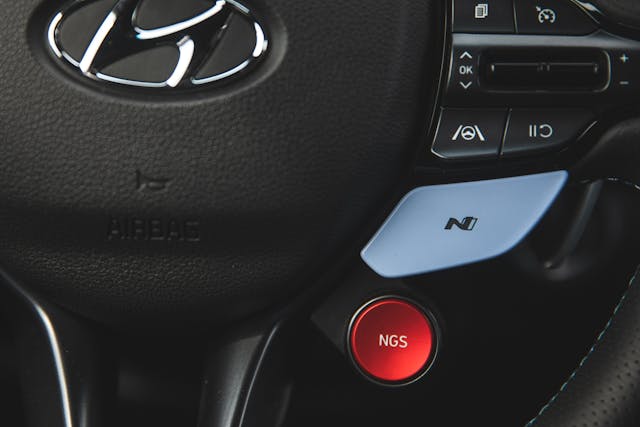
Said three-door hot-hatch weirdo was introduced in 2019 and retired for the 2023 model year. The standard-issue Veloster wasn’t selling, which meant the spicy version was losing even more money than it should. One, then the other, met the axe.
Despite that loss, Hyundai wanted the N brand to survive (and thrive) in America. Behind the Veloster N came the Elantra N for 2022, a four-door sedan that inherited the former’s engine and added an optional dual-clutch automatic transmission (DCT). N now puts that same basic formula—including 276-hp powertrain and auto gearbox—in the Kona.
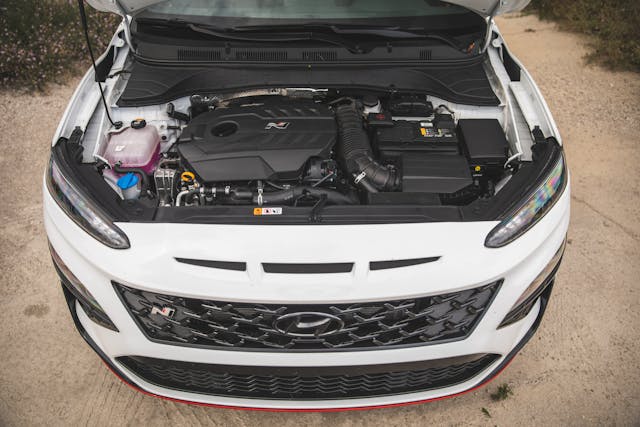
Ahead of our test, the why of a Kona N was not exactly clear. After a week of living with one, there’s no doubt the Kona N is serious fun. The question, however, remains. It feels a little like someone at Hyundai looked at the dying Veloster, then the N division, and said:
“Heck, do the Kona. We all know Americans love SUVs. Just add some spice to the little one!”

The end result is more capable—and more fun—than you’d expect. The rowdy, 276-hp engine sounds and feels like the product of highly talented yet mildly loose-cannon engineers. Most Konas don’t pull giggles or shrieks from your friends as you merge onto the highway, the turbo brimming with boost as the tach reaches for redline. The brakes are comfortingly capable, as well. The calipers are single-piston, like the standard Kona’s, but rotors are far larger (2.2 inches in the front, 1.2 in the rear) and clamped by pads of a proprietary, high-performance compound, says Hyundai.
The dual-clutch transmission, the only one offered with the Kona N, knows to be gentle unless in standard drive modes. In N mode, however, upshifts turn crisp, the suspension damping is at its most aggressive, and the exhaust joyfully issues crackles and pops.
Specs: 2022 Kona N
Price: $35,445 / $35,845 (base / as-tested)
Powertrain: 2.0-liter turbocharged inline-four; eight-speed wet dual-clutch transmission
Horsepower: 276 @ 5500–6000 rpm
Torque: 289 lb-ft @ 2100–4700 rpm
Layout: Front-wheel drive, four-door, five-passenger crossover
Weight: 3340 pounds
EPA-rated fuel economy: 20/27/23 (city/highway/combined)
0 to 62 mph: 5.1 seconds (est.)
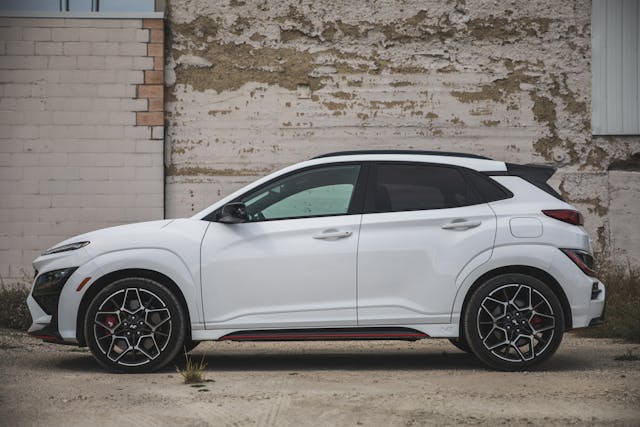
Ride quality is where the limitations of the Kona’s underlying architecture become apparent. It can be jittery over rough pavement and unsettled on the highway, where it requires small, frequent steering corrections. The platform is Hyundai’s so-called “B-SUV,” essentially a modified version of the Euro-market i30 subcompact’s bones. The Elantra uses the larger, “K3” platform, which gives the sedan a longer wheelbase, by 4.7 inches, and contributes to a more settled personality on those fabulous 19-inch wheels, despite wearing tires with a smidge less sidewall than the Kona’s. (Rear-seat passengers enjoy nearly 3 more inches of leg room in the Elantra, plus an extra inch of headroom.) The sedan is less prone to the pogo effect on expansion joints and more supple with the electronically controlled suspension in max-attack N Mode.
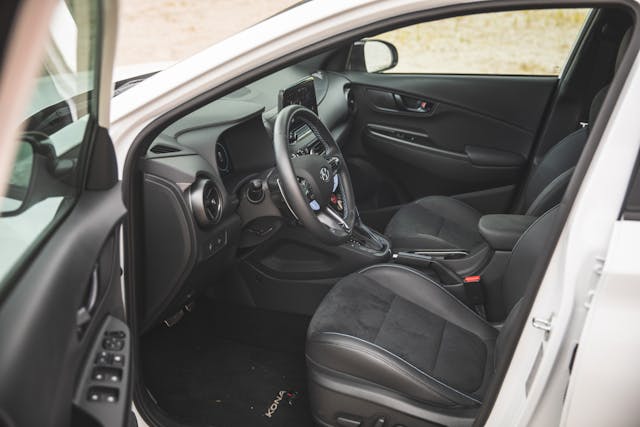
In total passenger space, measured in cubic feet, the Elantra sedan actually beats the Kona crossover, 99.4 to 94.1. In a battle of real-world practicality, we’d give the Kona a slight edge. Fully packing the trunk of a Kona requires blocking the view out the rear window, and you won’t have that problem in a sedan, but the Elantra N sacrifices some pass-through space in the name of at-limit driving stability: It has a giant X brace between the passenger compartment and trunk. The total interior volumes may be nearly dead-even (113.6 cubic feet for the Elantra, 113.3 for the Kona), but the Kona’s hatch would better fit a small dresser.
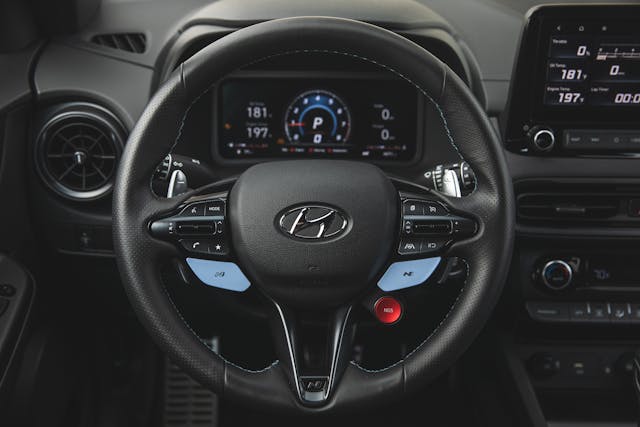
Interior quality isn’t the Kona’s strong suit, given the $35,000 price point. The Kona N wears some bits and bobbles you’d recognize from an automatic-transmission Elantra N, like the steering wheel with its perforated leather, blue thumb pads, and red NGS (N Grin Shift) button, but, from the inside, the Kona N looks an awful lot like … a regular Kona with a fancy steering wheel and some seat embroidery.
It also lacks some of the best features that make the Elantra N feel cool. The hot Elantra gets deliciously understated “N Light Sport” bucket seats upholstered in two colors: light blue, then black, with the black perforated to reveal pinpricks of blue. There are race-car-like cutouts for the seatbelts. (The N in each headrest glows, for crying out loud.) The Kona N has chairs of different design and structure: Hyundai assures us these “N Sport” seats are unique to it and bolstered more aggressively than those in the regular Kona. Function-wise, we have no complaints, but they fail to communicate the Elantra N’s same swank.
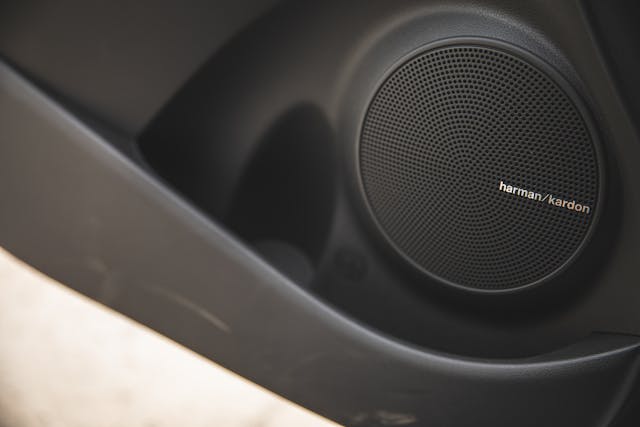
The door cards and upper speaker grilles tell a similar story. The Elantra fits textured suede panels around metal grilles, the Kona is plastic and plastic. Then there’s seating position: The Elantra N positions you low and secure, whereas the Kona N perches you in a higher, less sporty position at its helm.
In the realm of digital drama, it’s the Elantra that again wins. The Kona’s dash-mounted display gets no larger when you make the $6850 jump from Kona N-Line (mild spice) to N (“he who controls the spice … controls the universe”), and neither does the digital instrument cluster. The Elantra gets the unified “gauge panel” with two screens mounted into the same horizontal frame as the main infotainment screen—the Golf GTI uses a similar one—and this more streamlined look evokes the setups you’d find in some Mercedes-Benzes. A nice touch.
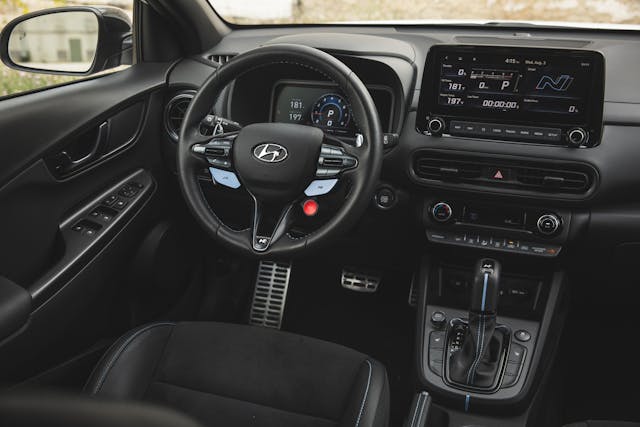
The disparity in base price is deceiving, since the $33,245 base price of the 2022 Elantra N assumes a manual transmission; the dual-clutch automatic costs $1500 extra. That charge is baked into the $35,445 out-the-door price of our 2022 Kona N. Remove it, and the difference shrinks to $700.
For more money, lower fit and finish, and what in this driver’s hands was a less-than-pleasant ride, the Kona N doesn’t make a convincing case against Hyundai’s own Elantra, unless the added utility is a deal-breaker. It represents a niche within a niche. And we know how that worked out for the Veloster.
***
Check out the Hagerty Media homepage so you don’t miss a single story, or better yet, bookmark it. To get our best stories delivered right to your inbox, subscribe to our newsletters.
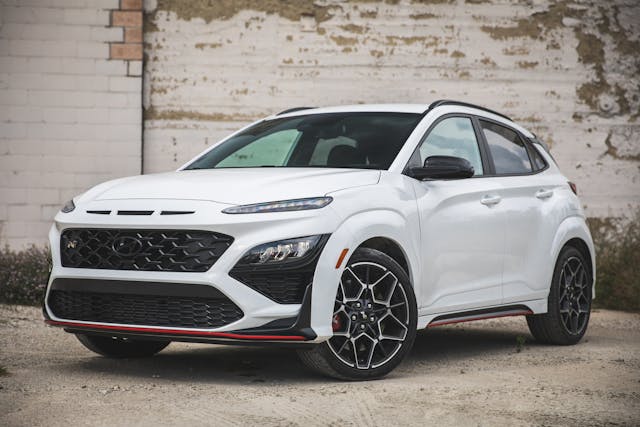
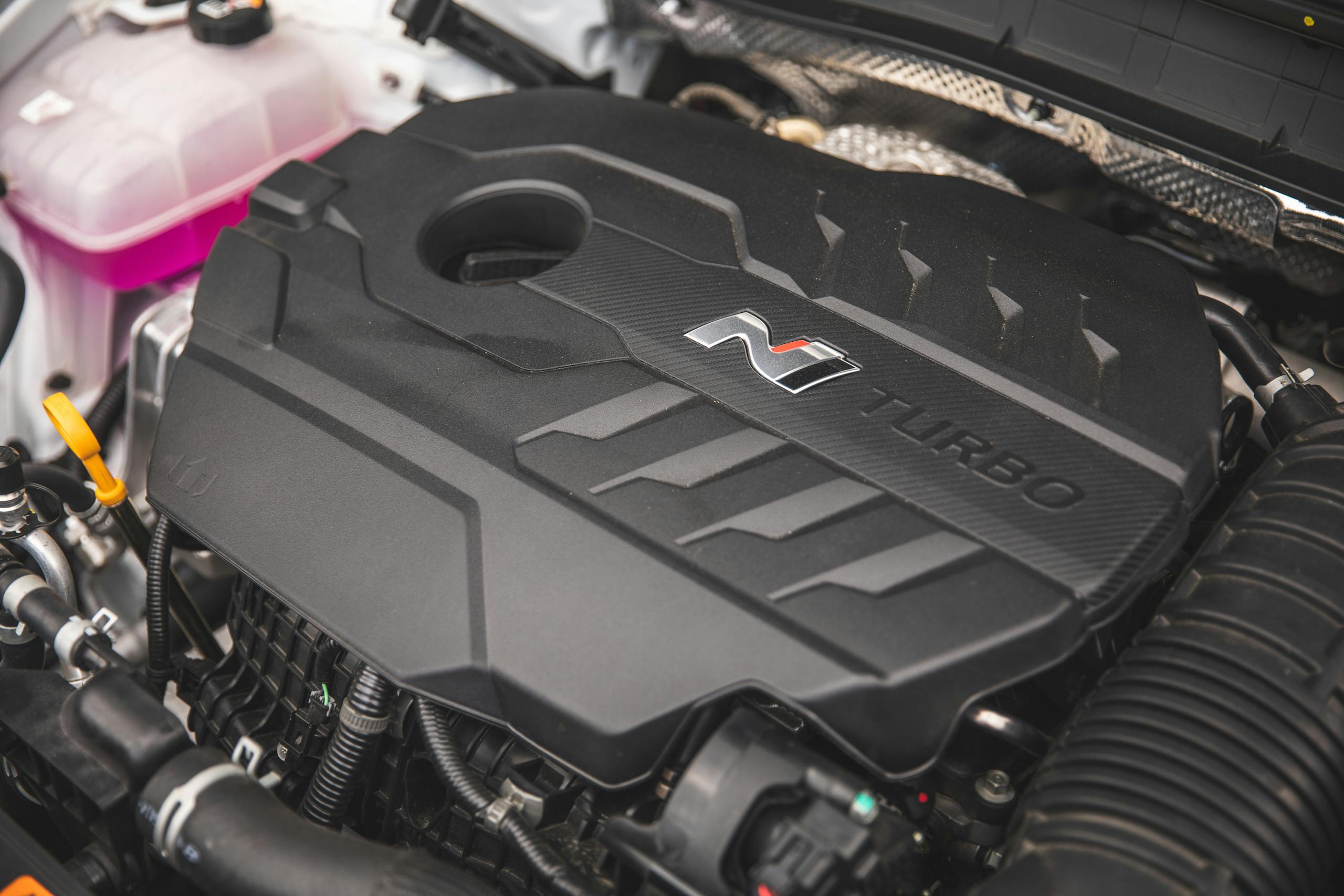
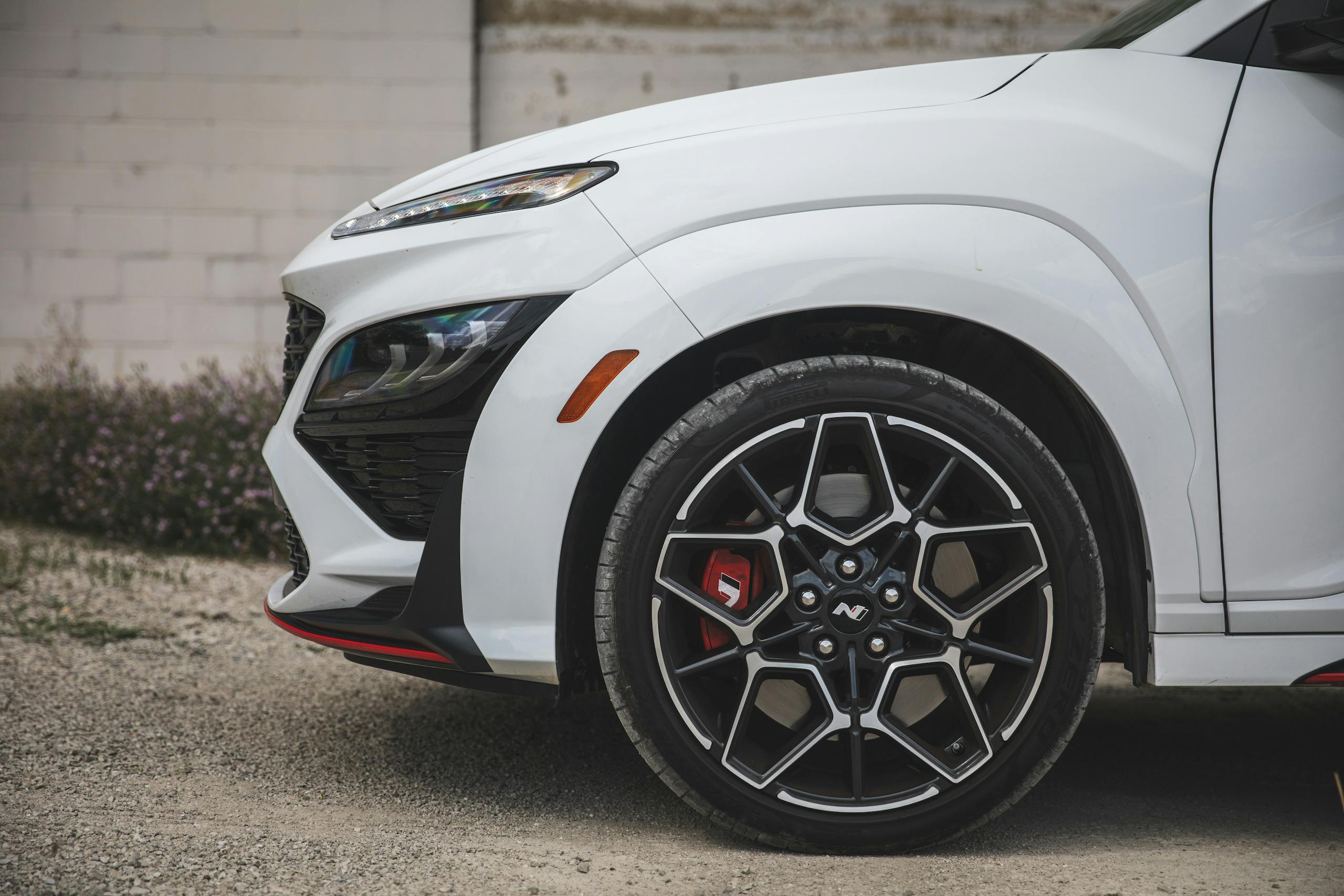
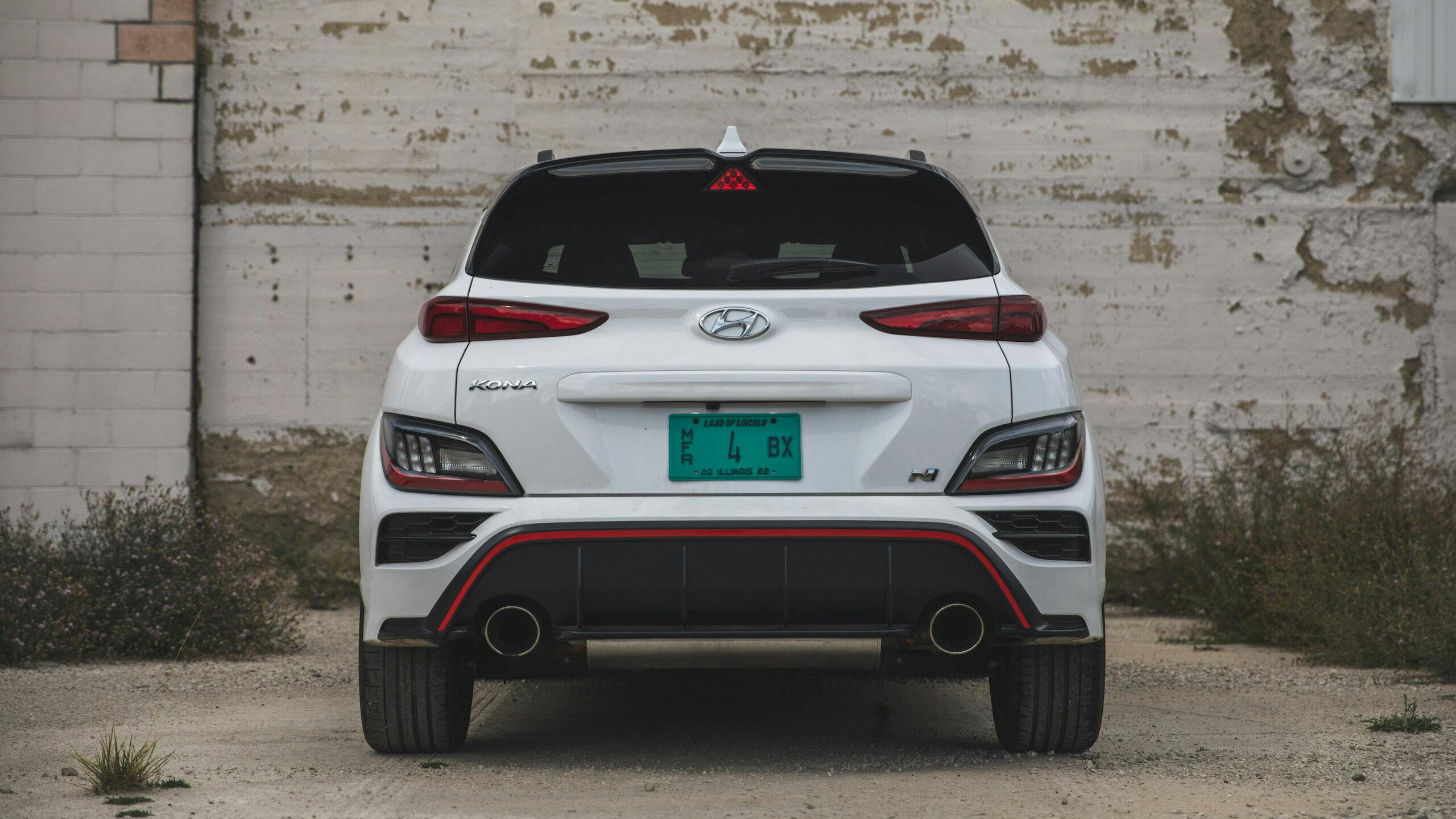
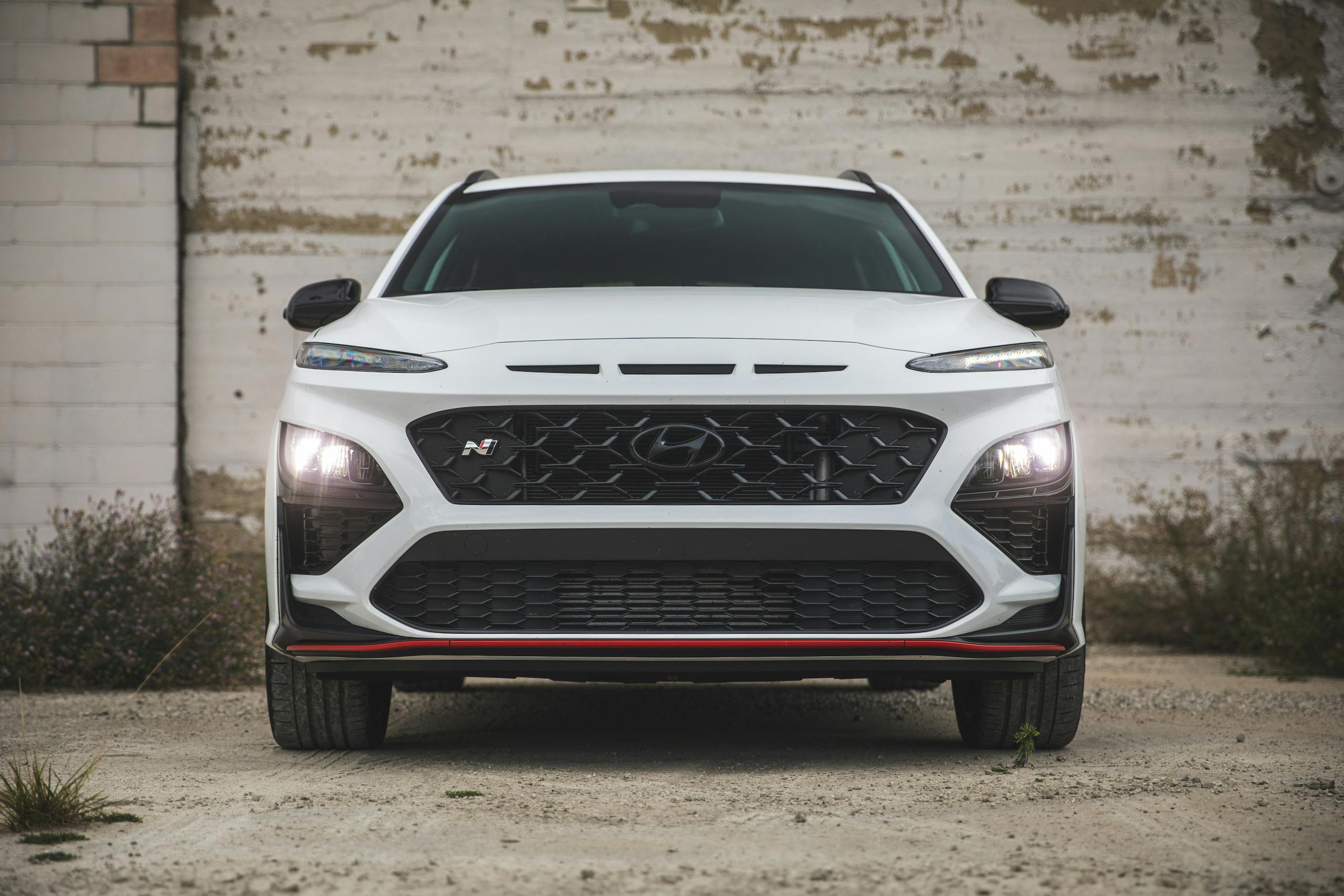

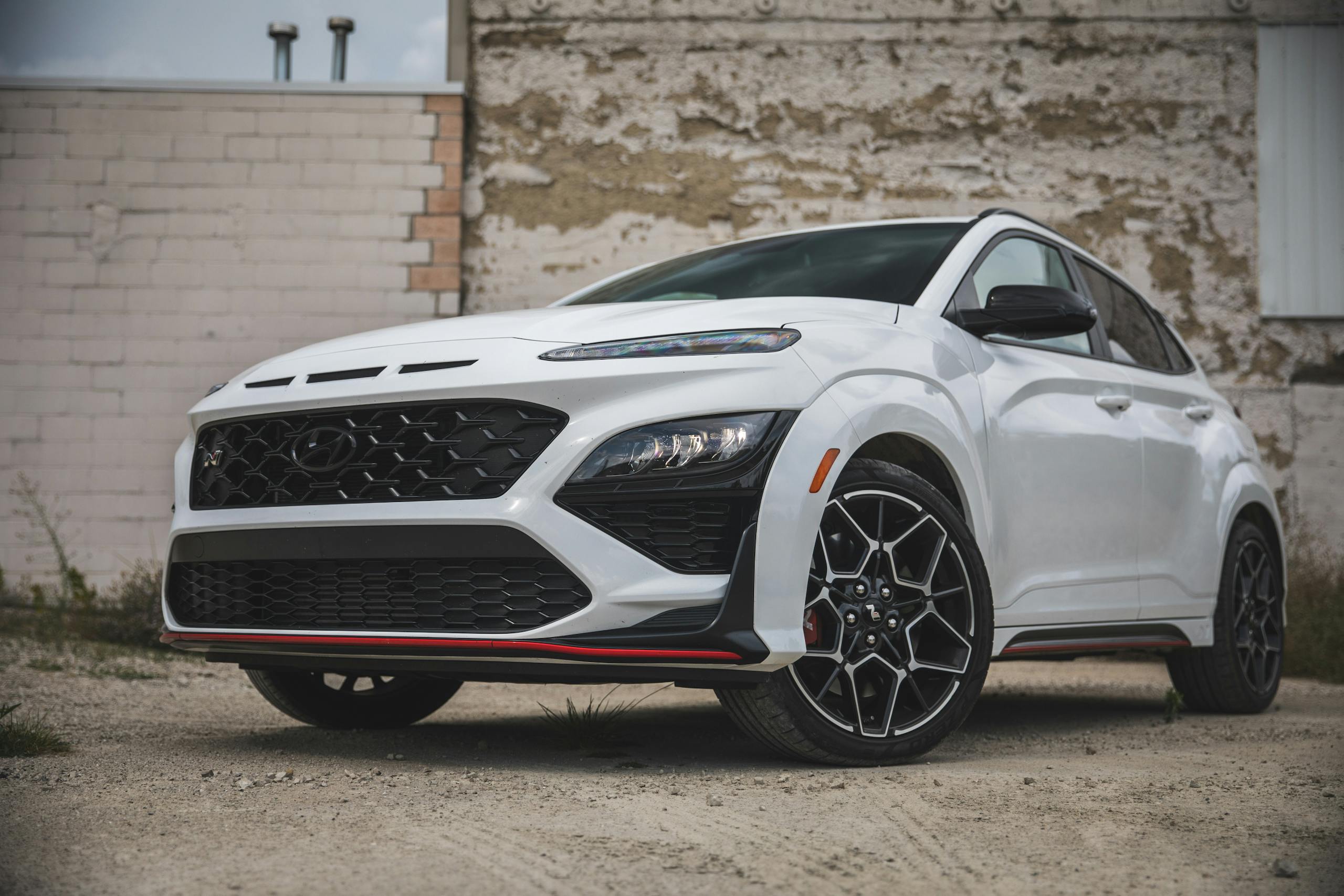
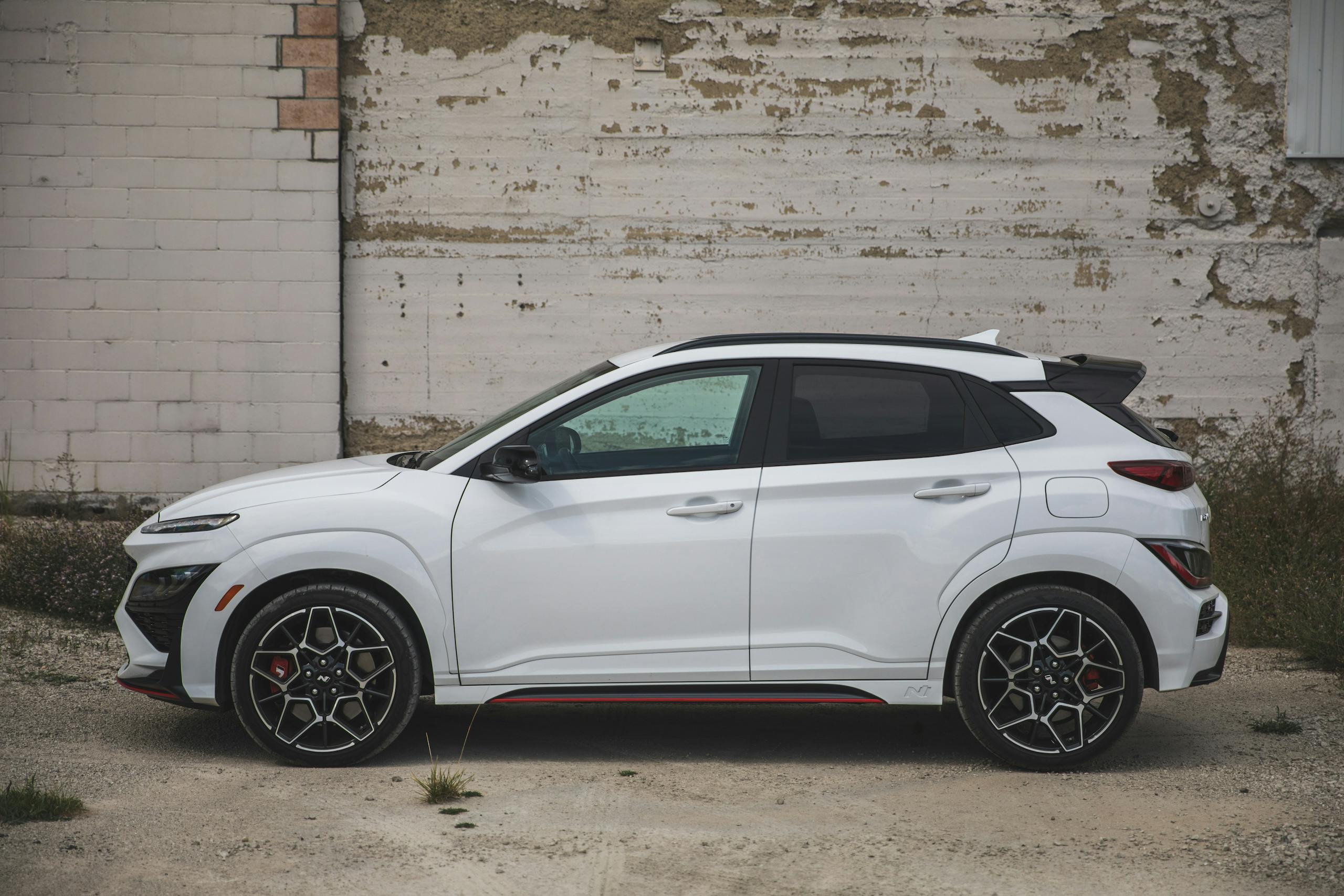
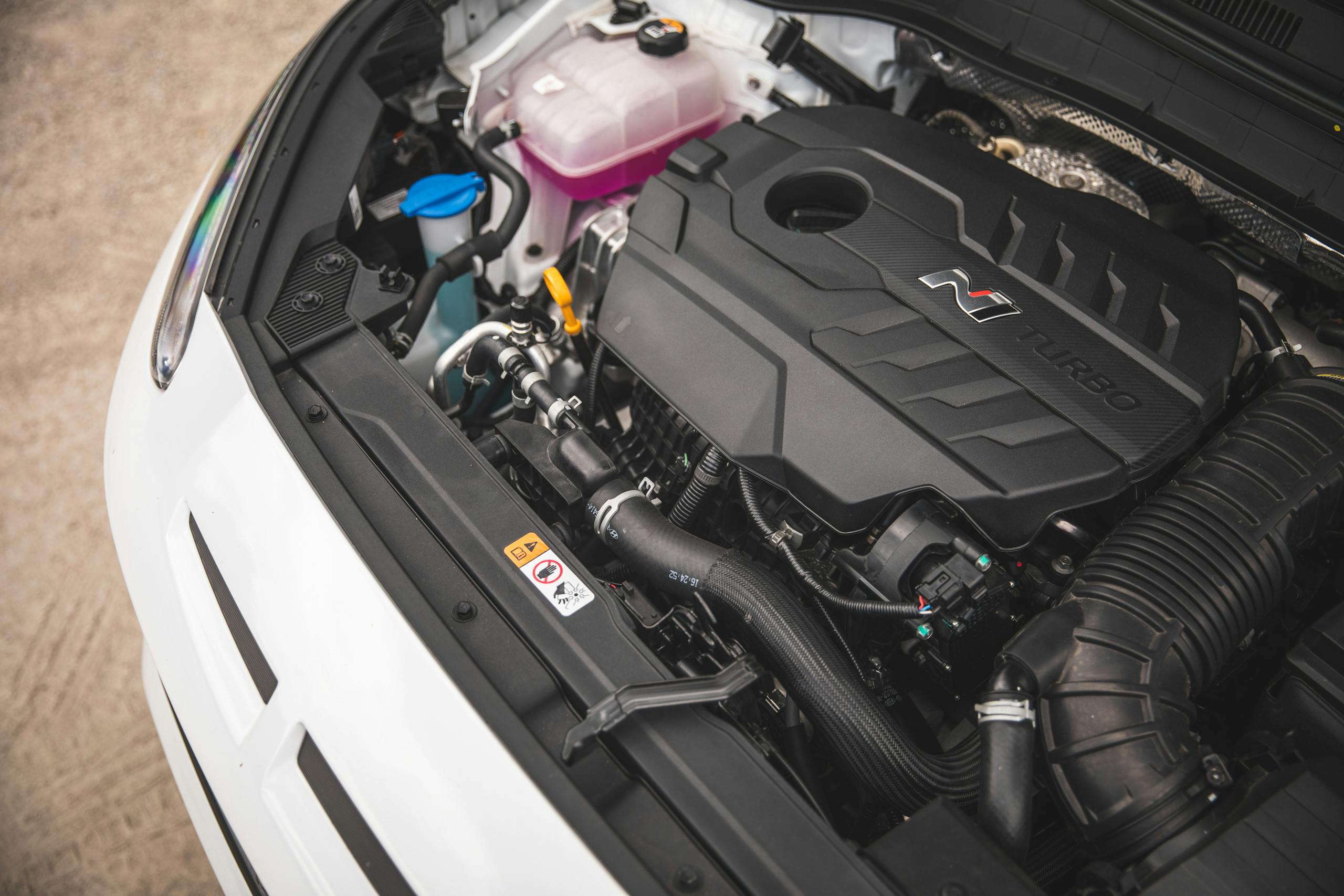


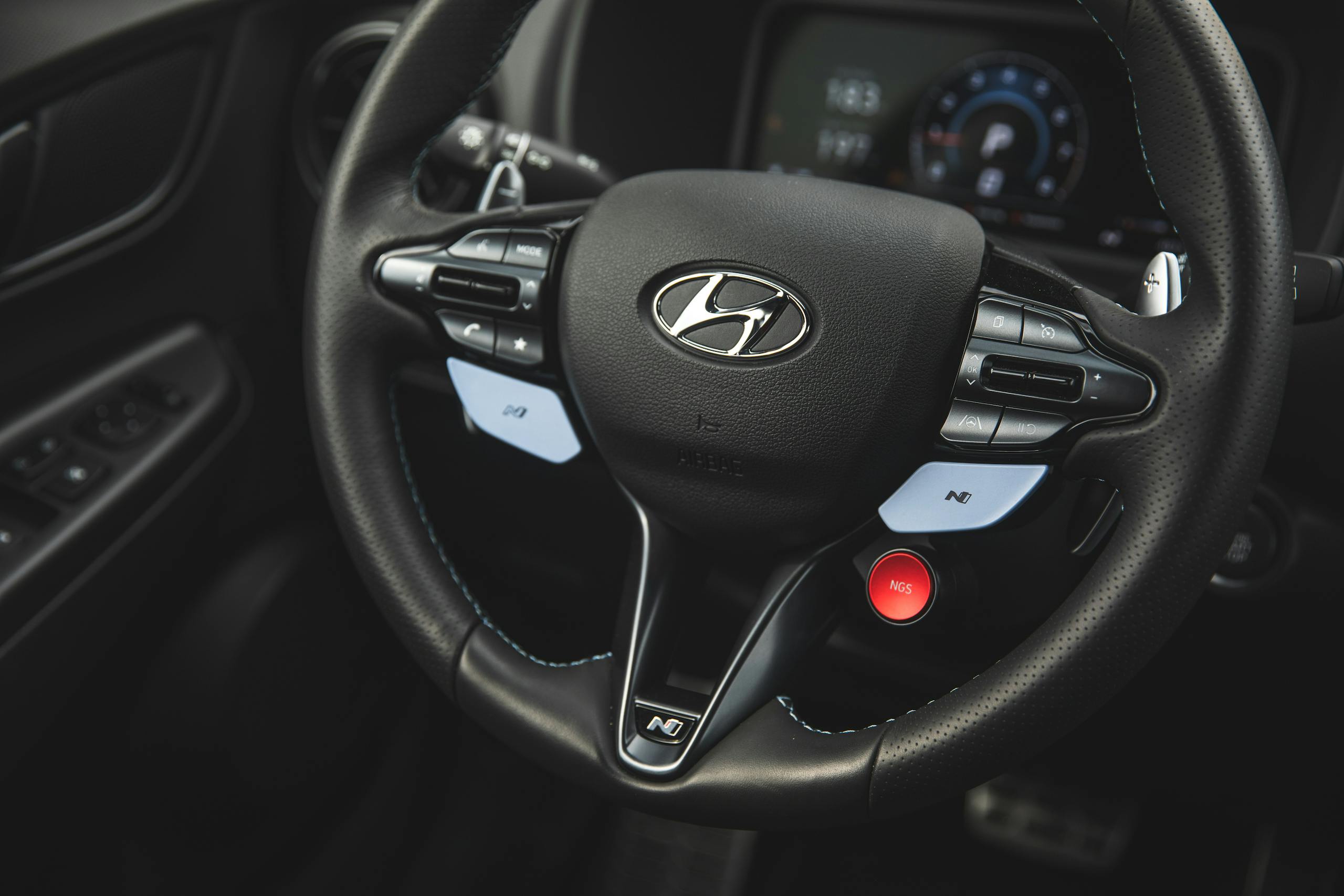


You didn’t mention looks. Most of the reviews about the Elantra came down to “it performs well, the manual isn’t Honda great and the front is ugly”. This seems like a decent alternative.